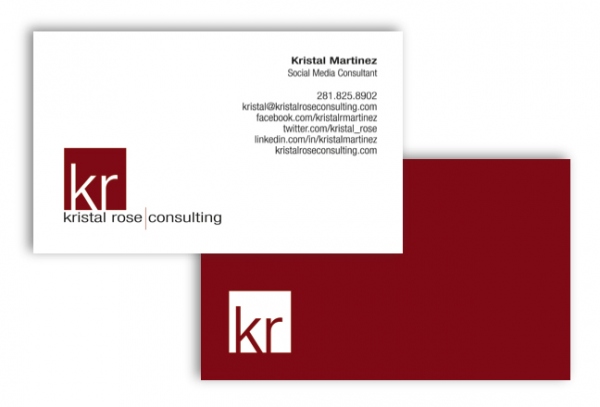 Nathan Yerian
Nathan Yerian

This is a question that some people never think twice about, and others completely over think. In both instances you can end up with something that doesn’t do your brand justice, or that is so “unique” that it is actually detrimental.
Sometimes the Clever Thing is to Not Be too Clever
Most will agree the sole purpose of a business card is to provide your contact information in a manner that is useful and capable of being distributed. So what role does the actual design of your card play in effectively fulfilling this primary objective? I would put it in the major category. Consider the components that can either make your card well designed or over designed.
Let’s start by deconstructing the basic components of a well designed business card.
Size Does Matter
We are all familiar with the standard business card size (2? x 3.5? for the more technical bunch). Recently however, there are more and more, what I like to call, “size renegades”. These off sizes push the envelope on what was once a standard.
If you are out in the business and especially networking community, I’m sure you’ve seen your share of cards both large & small. Some people would argue that an off sized card differentiates you, your business, and/or your brand. Although I agree it may separate you from the herd at a networking event, is an odd size practical?
Personally, I have a large stack of business cards sitting on my desk as well as, a business card binder on my shelf. Hand me an undersized card and it will probably get lost in the stack or potentially altogether misplaced. On the other hand, when I get an oversized card, I know it’s bound to be troublesome in my nicely, soon to be organized stack of cards and most likely will not fit in my business card storage systems.
I know what you’re thinking. It’s 2010. What about CRM software. I use a CRM, but that does not mean that I toss a business card once I enter the info. Eventually, business contact information may be exchanged 100% electronically. Until then, a 2? x 3.5? is your best bet for a professional, manageable and more importantly retrievable business card.
Lay of the Land
Layout is a little more flexible than size and a much more appropriate way to be creative or out of the box. Do you prefer a vertical or horizontal card? Both are adequate selections. One may be more fitting to your logo, contact info, industry or the personality of your brand. Also, a hybrid of the two can be very visually appealing when done correctly.
If you are not familiar with layout design and/or creativity is not exactly your calling, make use of the many available resources for help in this area. I always recommend consulting a reputable design professional.
Be sure to explore the merits of all options before you make a decision. After all, the card you leave behind is a representation and reminder of you so why not make sure you deliver the best possible presentation?
You are Your Content
Regardless of layout choice, the primary focus of your card should be your contact information. So naturally it needs to be readable (legible font & size) and needs to have the important information (how to contact you) all in one place.
Resist the tendency to use your business card for advertising. By using this space as an avenue to advertise you run the risk of blurring the focus of your card, and potentially deterring valuable contacts from ever reaching out to you. As a reputable source in your market, you have, or should have other vehicles to deliver your marketing message. Allow them to deliver those message components and keep your card focused on contact content.
Finishing Touches
Your business card finishes are another choice that is truly at your discretion. When looking at your available options, take note of what may benefit your brand, or complement your design. Some options are more expensive than others, again consult a professional to be sure you have a good handle on the difference the selection will make for your card and what that selection will add to the cost of production.
Finish selections are a great way to differentiate your card. Adding an upgraded stock, foil, spot UV, etc., can highlight the design elements of your card and attract viewer attention. As long as it is done in a complementary and tasteful manor, you can significantly add to the effectiveness of your business card. Just keep in mind the old adage, sometimes less is more.
Many times your business card is your first touch point with a potential client or customer. What does your card say about you? If it is not delivering the type of image or conveying the type message that accurately represents you and your business, it may be time for a redesign.
